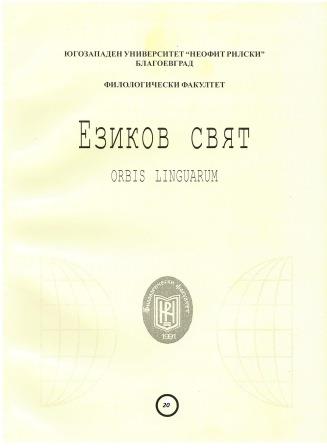ЛЕКСИЧЕСКИЕ И СЕМАНТИЧЕСКИЕ ПАРАЛЛЕЛИ В ОБОЗНАЧЕНИИ ВРЕМЕНИ В БОЛГАРСКИХ ГОВОРАХ И СЛАВЯНСКИХ ГОВОРАХ КАРПАТ
LEXICAL AND SEMANTIC PARALLELS IN THE DESIGNATION OF TIME IN THE BULGARIAN DIALECTS AND THE SLAVIC DIALECTS OF THE CARPATHIANS
Author(s): Mikhail KondratenkoSubject(s): Language and Literature Studies, Theoretical Linguistics, Lexis, Semantics, Philology
Published by: ЮГОЗАПАДЕН УНИВЕРСИТЕТ »НЕОФИТ РИЛСКИ«
Keywords: the concept of time in Slavic dialects; Ukrainian dialects in the Carpathian region; Bulgarian dialects; nomination principles; lexical and semantic isoglosses; semantic shifts
Summary/Abstract: The article examines the peculiarities of the designation of time periods in the Bulgarian dialects and in the Ukrainian dialects of the Carpathian region, mainly from the point of view of the specifics of dialect segmentation of this semantic sphere and the principles of nomination. The lexical material of the Ukrainian dialects of the Carpathians and dialects of the Bulgarian language allows us to identify within the framework of the article some semantic models and shifts that exist in time designations: orientation in the names of months to phenological cycles and periods of work; perception of the concept of "time" displayed by vocabulary as a favorable or unfavorable time for any activity or life in general; nomination of morning as the appearance of daylight or a period of time slightly removed in the past from the moment of speech; borrowings are also noted as part of the vocabulary denoting time in its various manifestations. Based on the analysis of dictionaries of the Carpathian-Ukrainian and Bulgarian dialects, it is concluded that this vocabulary represents semantic models of names of time periods that have parallels in other Slavic and some non-Slavic languages. Taking into account the wide distribution in the linguistic territory of Slavia, as well as beyond its borders, it is possible to assume the status of these models as semantic archetypes, represented in their totality in the Carpathian-Ukrainian and Bulgarian dialects.
Journal: Езиков свят - Orbis Linguarum
- Issue Year: 20/2022
- Issue No: 3
- Page Range: 325-331
- Page Count: 7
- Language: Russian

